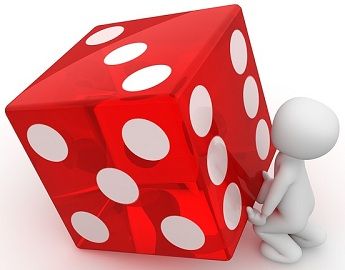 Force and Pressure are the two important concepts of physics which are often erroneously interchanged by the people. But, these two are not same at all, as there is a vast difference between force and pressure, which you are going to understand only if you learn about them. Do you ever observe, what makes a football move? Or What makes a drawer open? This is because we apply force on the object. Force is nothing but the push or pull, which changes the state of motion or direction of the object.
Force and Pressure are the two important concepts of physics which are often erroneously interchanged by the people. But, these two are not same at all, as there is a vast difference between force and pressure, which you are going to understand only if you learn about them. Do you ever observe, what makes a football move? Or What makes a drawer open? This is because we apply force on the object. Force is nothing but the push or pull, which changes the state of motion or direction of the object.
Now have you ever wondered, why tools which are made to cut, chop, trim or pierce always have sharp edges? Or why heavy vehicles always have fat tyres? This is only due to pressure, which refers to the physical force per unit area. So, check out the article, in which we have simplified the differences for you.
Content: Force Vs Pressure
Comparison Chart
| Basis for Comparison | Force | Pressure |
|---|---|---|
| Meaning | Force is any kind of push or pull, resulting from the interaction of two bodies, that can cause the object to accelerate. | Pressure is force extended over an area, acted upon something, in the direction perpendicular to its surface. |
| Standard unit | Newton, represented by symbol N | Pascal, represented by symbol Pa |
| Instrument | Dynamometer | Manometer |
| Quantity | Vector Quantity | Scalar Quantity |
| Applied to | Faces, edges and vertices | Faces |
| Velocity | Can be changed | Cannot be changed |
Definition of Force
By the term ‘force’ we mean the push or pull, caused by the interaction of two objects, which changes or tries to change the state of the object. It is a vector expression that has both magnitude and direction. Magnitude is the quantity of force, i.e. the larger the magnitude, the more is the force applied, and vice versa.
To put simply, it is any influence; that changes the state of rest or motion of the body, on which it is exerted. Speed and direction of the motion are the two component which describes the state of motion. Force can change the state of motion or the shape of the object on which it is acted upon.
If more than one force is exerted on the object, then the resultant force is termed as net force. Further, when the two forces are applied in the same direction, then the net force will be the sum of the two forces. On the other hand, when the two forces are applied on opposite direction then the net force will be the difference between the two forces. There are mainly two types of forces, which are:
- Contact Force
- Muscular Force
- Frictional Force
- Non-contact Force
- Magnetic Force
- Electrostatic Force
- Gravitational Force
Definition of Pressure
Pressure is the amount of force, applied on a surface per unit area. It is the force acting perpendicular to the surface of the object, causing the force to spread over a certain area. Therefore, pressure considers the area over which the force is exerted, i.e. when force extended to a large area, the pressure is low, while if the same force is stretched to a small area, the resulting pressure would be high.
In finer terms, pressure is the force produced out of continuous pushing or pressing of an object by another object. It can be calculated as:
Pressure = Force / Area
Key Differences Between Force and Pressure
The difference between force and pressure are discussed in detail in the points given below:
- Any push or pull, resulting from the interaction of two bodies that can cause the object to accelerate is called force. Force extended over an area, acted upon something, in the direction perpendicular to its surface, is called pressure.
- The measurement unit of force is Newton labelled as N, which is equal to one kilogram-meter per second squared. On the other hand, pressure’s SI unit is Pascal, expressed as Pa, which is equal to one newton per meter squared.
- Dynamometer, an instrument used for measuring force, torque (i.e. the moment of force) or power. Conversely, Manometer is a device which is used to measure the pressure.
- Force is a vector measurement which has both magnitude and direction. As against this, pressure is a scalar, as it has only magnitude but not the direction.
- Force can be acted upon, face, edges or vertices of the object. Unlike, pressure can be applied to the face of the object.
- Force can change the velocity of the object when applied from one direction. In contrast, pressure cannot change the velocity of the object.
Conclusion
Therefore, after a detailed discussion on the two concepts, you might have clearly understood about force and pressure. Some actions which involve force are pulling, pushing, kicking, stopping, squeezing, opening, etc. On the other hand, school bags with broad straps, needles having sharp tip are some of the examples of pressure.






Leave a Reply